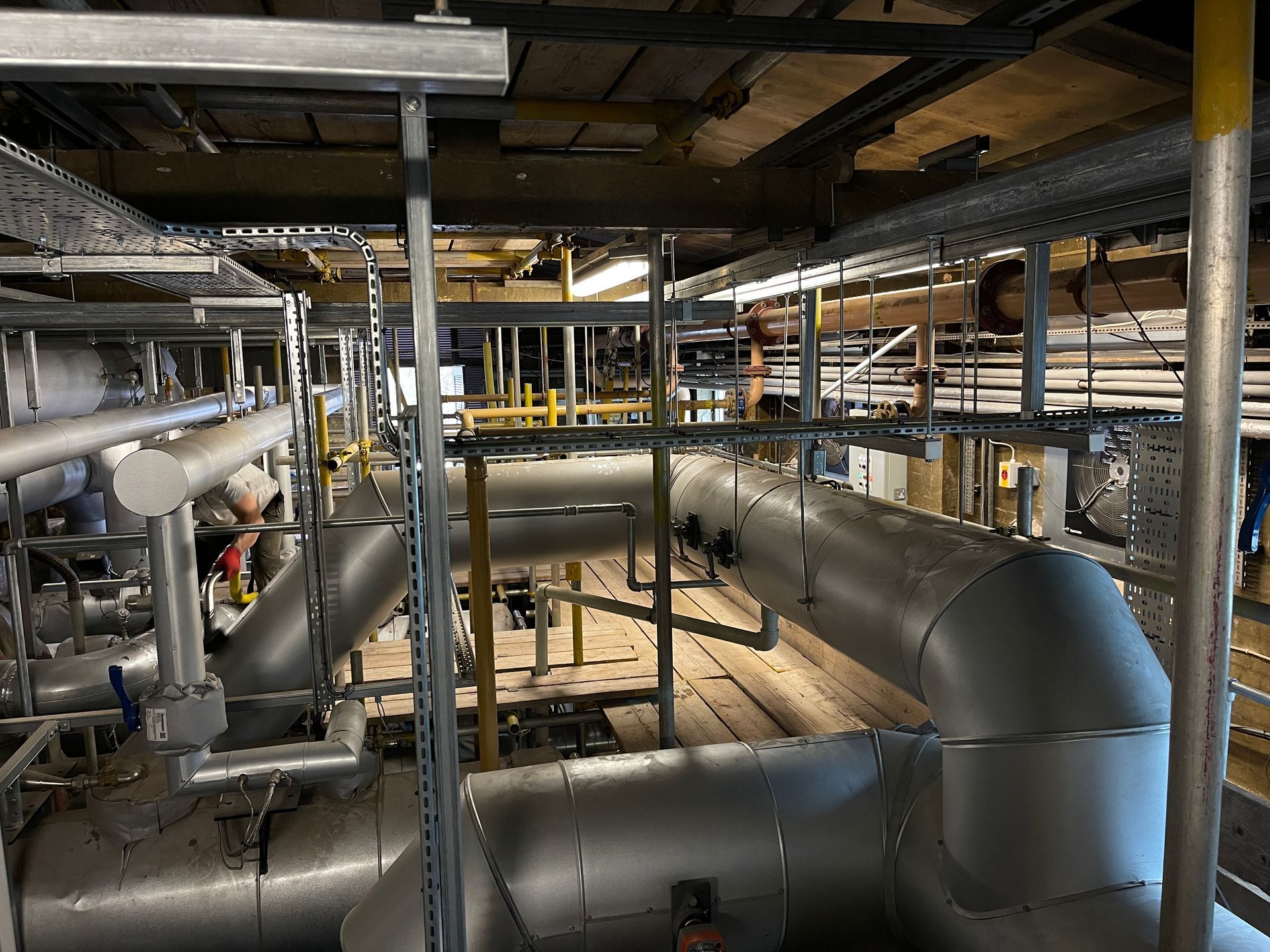Ducting Cleaning
High Level Duct Cleaning

Silica dust is a common problem in the crematories due to the refractories and can accumulate on both internal and external surfaces of the cremation equipment, including high-level ducting. However, silica dust can be particularly hazardous when it accumulates on external surfaces, such as the walls and floors of the crematorium.
Silica dust is a known carcinogen and can cause a range of health problems when inhaled, including lung cancer, silicosis, and other respiratory diseases. When silica dust accumulates on external surfaces, it can become airborne and pose a risk to workers and visitors in the crematorium.
This is especially true if the dust is disturbed, through vibration and maintenance activities.
Regular cleaning of external surfaces in the crematorium is therefore essential for reducing the risk of silica dust exposure.
This may involve using specialised cleaning techniques and equipment, such as vacuum cleaners with high-efficiency particulate air (HEPA) filters or wet cleaning methods. Proper personal protective equipment (PPE), such as respirators and gloves, should also be used by workers to prevent inhalation or skin contact with silica dust.
In addition to cleaning external surfaces, it is also important to properly dispose of any materials contaminated with silica dust, such as filters or vacuum bags, to prevent further exposure. By taking these precautions, crematoriums can help protect the health and safety of their workers and visitors and ensure a safe and healthy environment for all.
Let us help your deep clean and keep your environmental health officer happy.
All rights reserved 2024

